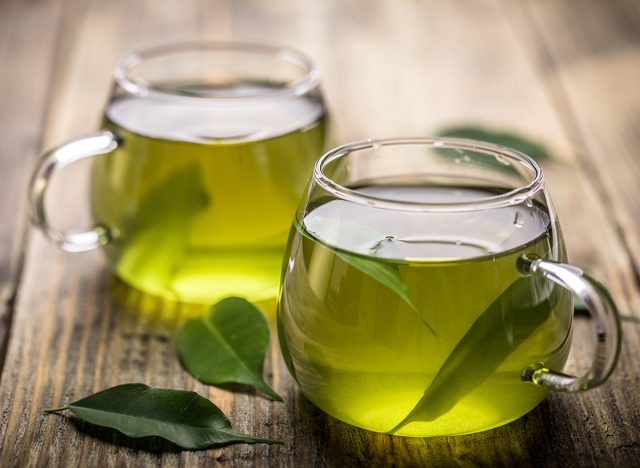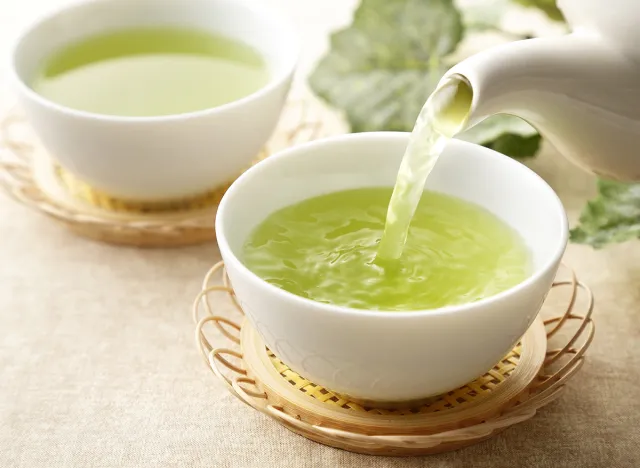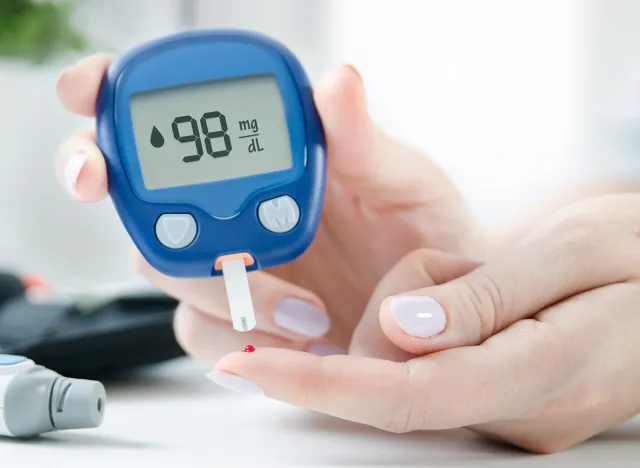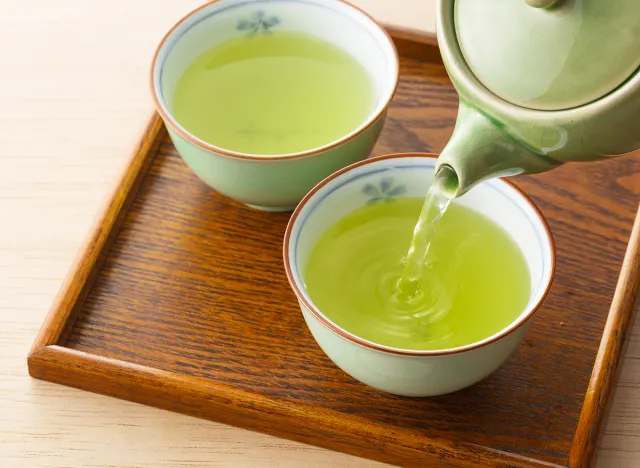7 Benefits of Green Tea for Fat Loss and Health

Green tea is considered a superfood for good reason—it has many health benefits, not least encouraging fat loss. "Green tea is exceptionally high in flavonoids that can help boost your heart health by lowering bad cholesterol and reducing blood clotting," says Penn Medicine. "Studies show this type of tea can also help lower blood pressure, triglycerides and total cholesterol." Here are seven incredible benefits of green tea for weight loss and overall health.
Stress Relief

Stress can undermine weight efforts by spiking cortisol levels. As green tea is a natural source of L-theanine, it can help manage stress and encourage fat-burning. L-theanine also helps with sleep quality, another factor that affects weight loss.
Lower Cholesterol

Studies show green tea may help lower LDL "bad" cholesterol and triglycerides. "The limited data available on green tea support a potential association between green tea and beneficial properties in relationship to risk factors for cardiovascular disease," Kathy McManus, director of the Department of Nutrition at Brigham and Women's Hospital, tells Harvard Health.
RELATED: 14 Fruits That Are Secret Weapons for Losing Weight
Natural Fat Burner

Animal studies show green tea can help with fat-burning. "Our findings suggest that green tea in the absence of caffeine can enhance the effects of exercise," Joshua Lambert, associate professor of food science, tells Penn State. "The mice that exercised and had decaffeinated green tea extract had a more significant change in body weight, and they had better outcomes as far as lower blood glucose and lower plasma insulin levels. It looks like a combination of exercise and decaffeinated green tea enhances the body's ability to use energy that is taken in."
Caffeine and Metabolism

Green tea contains caffeine, which is known to help boost metabolism. "There have been quite a few studies that suggest higher blood concentrations of caffeine may be associated with a lower body mass index (BMI) and lower body fat mass," Allegra Picano, RDN, tells Henry Ford Health. "One of the studies stated that a person who consumed twice as much caffeine as another had 22% more reduction in weight, 17% more reduction in BMI and 28% more reduction in body fat."
Bone Health

Bone health is crucial for exercise, which helps with fat loss. Studies show regularly drinking green tea may help prevent osteoporosis. "Most people reach their peak bone mass around age 30. After that, bone remodeling continues, but you lose slightly more bone mass than you gain," says the Mayo Clinic.
RELATED: 12 Mistakes to Avoid in When You Want to Lose Weight
Type 2 Diabetes

Green tea is shown to positively impact blood glucose levels. "Most physicians will initially recommend weight loss and exercise," says Richard Bruno, professor of human nutrition at The Ohio State University. "Unfortunately, we know most persons can't comply with lifestyle modifications for various reasons. Our work is aiming to give people a new food-based tool to help manage their risk for metabolic syndrome or to reverse metabolic syndrome."
RELATED: 10 Tips to Lose 40 Pounds in 6 Months
Low Calories

Green tea contains a paltry 3 calories in 8 fluid ounces, making it a great choice as part of a weight loss diet. "Replacing high-calorie foods with lower calorie choices and cutting your portion sizes can help you cut calories and improve weight control," says the Mayo Clinic. "For a successful — and lasting — weight management plan, you also need to increase your physical activity."
💪🔥Body Booster: Whether weight loss is the goal or not, green tea is an excellent choice for overall health.




